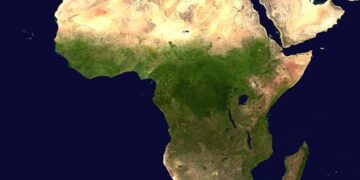Home Fossil Energy US in prime position to be the driving force behind Africa’s LNG and FLNG boom
The United States (U.S.) is poised to take the lead on the expansion of liquefied natural gas (LNG) and floating liquefied natural gas (FLNG) projects in Africa, which is set to spearhead the floating LNG market growth between now and 2027. As a result, U.S. operators and contractors can seize the opportunity to play a main role in realizing new capacity, alongside onshore developments.
 Congo LNG project’s FLNG Tango; Source: Eni
Congo LNG project’s FLNG Tango; Source: Eni
Organized by Energy Capital & Power, the upcoming Invest in African Energy (IAE) forum, which is taking place in Paris on May 14-15, is expected to showcase trade, partnership, and investment opportunities available to U.S. companies across Africa’s energy supply chain. Bringing together projects from all four corners of the continent to the global investment stage, the event aims to establish regional African gas markets and capitalize on rising U.S. interest in African energy.
As the continent seeks to develop its gas for domestic and export markets, the U.S. is well positioned to hone in on LNG as a crucial investment avenue, alongside traditional oil exploration. Wood Mackenzie pointed out in October 2023 that Africa’s $800-billion, 20-year upstream capital expenditure program would result in world-class LNG projects in Mozambique and floating LNG in five countries, presenting substantial gas-driven opportunities for U.S. investors, operators, project developers, and service providers.
Even though American companies are said to already be at the helm of Africa’s burgeoning LNG industry, Energy Capital & Power sees room for further growth, particularly in FLNG, which offers increased flexibility, reduced time to market, and suitability for smaller gas volumes. Westwood Global Energy’s research shows the global FLNG market is set to see $35 billion in new investment by 2027, totaling 18.3 million tons per annum (mtpa) of additional capacity.
With Africa dominating short-term investments, the increase in capacity is anticipated to generate an associated engineering, procurement, and construction (EPC) contract value of $13 billion. An additional 36.5 mtpa of capacity is expected to come on stream after 2027, with an EPC value of $22 billion. The projects and companies driving these capacity boosts are slated to be at the IAE forum, along with new projects in the pipeline.
Moreover, U.S. operators and contractors are at the helm of Equatorial Guinea’s flagship Gas Mega Hub (GMH), which seeks to monetize all stranded gas fields in the Gulf of Guinea to facilitate an intra-African LNG trade. After achieving the first gas from the project’s initial phase, Chevron’s Noble Energy E.G. signed a heads of agreement with Marathon Oil and the government of Equatorial Guinea last March to develop phases two and three.
According to Energy Capital & Power, the GMH project could also pave the way for the construction of West Africa’s first LNG storage and regasification plant, the Akonikien LNG Terminal, proposed in 2019 to be built by an American manufacturer, Corban Energy Group.
Furthermore, Mozambique is perceived to represent another strategic market for U.S. gas investments, having passed $1 billion in LNG exports last November. America’s heavyweight ExxonMobil is currently leading the development of the $23-billion Rovuma LNG project and anticipates a final investment decision in 2025, utilizing a retooled, phased construction approach.
With a planned capacity of 18 million tons per year, the project is expected to deliver not only reliable, affordable energy to local customers but also exports to global markets. In South Africa, ExxonMobil is studying the commercial and technical feasibility of an LNG regasification terminal to bring low-cost, reliable fuel to the country.
These types of projects have the potential to enable U.S. participation in boosting Africa’s gas transport, storage, and regasification capabilities, as well as erecting power stations and associated infrastructure. Multiple LNG projects are on Africa’s horizon, including BP’s Greater Tortue Ahmeyim (GTA) LNG in Senegal and Mauritania, Perenco’s Cap Lopez LNG Terminal in Gabon, Eni’s Congo LNG in the Republic of Congo, and UTM Offshore’s first indigenous FLNG in Nigeria.
Therefore, Energy Capital & Power is convinced that the U.S. needs to cement its market leadership in Africa’s onshore and offshore gas industry, since LNG, which has been dubbed the fuel of the future, is set to play a significant role in the African and global energy mix for the foreseeable future.
The dust over the Biden administration’s decision to usher in a U.S. LNG permitting freeze has not settled yet, as reactions range spans from positive and negative views to all shades in between.

long read
Posted: 11 days ago
Bearing this in mind, Offshore Energy recently had an interview with two Bureau Veritas representatives, about the current and future energy landscape trends, hopes, challenges, and predictions for the offshore energy industry both in the U.S. and throughout the world.
>>> Read full article>>>
Copyright for syndicated content belongs to the linked Source : OffshoreEnergy – https://www.offshore-energy.biz/us-in-prime-position-to-be-the-driving-force-behind-africas-lng-and-flng-boom/































